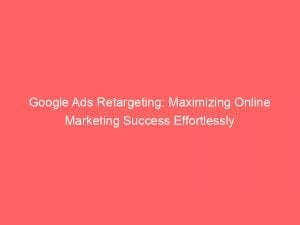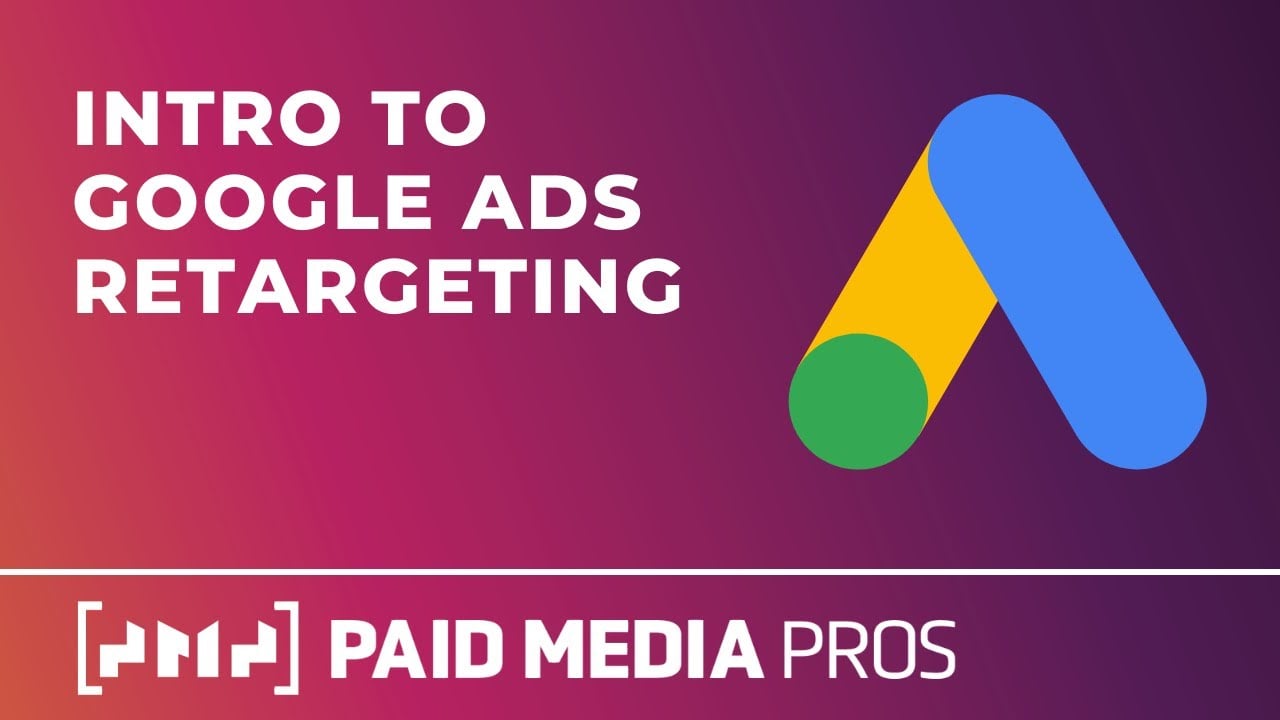In the booming world of online advertising, capturing the attention of potential customers has become paramount. And when it comes to reaching the right audience, there’s one name that stands head and shoulders above the rest: Google.
With its powerful targeting capabilities, GoogleAds has revolutionized the way businesses connect with their customers. But now, they’re taking it to the next level.
Brace yourself for an exciting transformation as Google Ads unveils its latest feature:retargeting, powered by the mighty Google search engine. Imagine the possibilities when you can effectively reach out to those who’ve shown interest in your brand.
Get ready for a game-changer in online advertising – let’s delve deeper into the world of Google Adsretargeting.
Table of Contents
- google ads retargeting
- Transition To New Solutions For Similar Audiences In Google Ads
- Simplified Audience Management With The “Audiences” Tab
- Introduction Of New Terminology In Google Ads
- The Power Of Retargeting With Google Ads
- Benefits Of Retargeting With Google Ads
- Optimal Bidding With Automated Bidding In Google Ads
- Create Text, Image, And Video Ads For Free With Ad Gallery
- Track Campaign Performance With Campaign Statistics
- Personalization Options For Google Ads Users
- Different Ways To Utilize Data Segments In Google Ads Retargeting
google adsretargeting
Google Ads retargeting refers to the process of re-engaging with individuals who have previously interacted with a brand or service through mobile or desktop platforms. It allows advertisers to reach out to these individuals with relevant ads, providing them with a prompt and well-timed advertising experience.
Retargeting with Google Ads offers several benefits, including focused targeting for specific cases, large-scale reach across devices and websites, and efficient pricing. Additionally, Google Ads provides automated bidding, allowing advertisers to optimize their bids and win ad auctions at the best possible price.
The platform also offers the Ad gallery feature, enabling the creation of text, image, and video ads for free. Detailed campaign statistics are provided, helping advertisers monitor their performance, ad visibility, and costs.
Users also have the option to disable the collection of their data for personalized ads. Overall, Google Ads retargeting provides advertisers with multiple ways to utilize data segments, such as targeting website visitors, dynamic remarketing, search ads, YouTube users, and customer match.Key Points:
- Google Ads retargeting re-engages individuals who have interacted with a brand or service on mobile or desktop platforms.
- Benefits of retargeting with Google Ads include focused targeting, large-scale reach, and efficient pricing.
- Automated bidding allows advertisers to optimize bids and win ad auctions at the best price.
- The Ad gallery feature enables the creation of free text, image, and video ads.
- Detailed campaign statistics help advertisers monitor performance, ad visibility, and costs.
- Users can choose to disable data collection for personalized ads.
Sources
https://adespresso.com/blog/google-ads-retargeting-guide/
https://support.google.com/google-ads/answer/2453998?hl=en
https://support.google.com/tagmanager/answer/6106960?hl=en
https://support.google.com/google-ads/answer/1704368?hl=en
Check this out:
💡 Pro Tips:
6. Use dynamic remarketing to show personalized ads featuring products or services that users have previously viewed on your website.
7. Experiment with different bidding strategies, such as target CPA (Cost Per Acquisition) or maximize conversions, to optimize your retargeting campaigns.
8. Take advantage of Google’s customer match feature to upload your own customer data, such as email lists, to target specific individuals with your ads.
9. Utilize the “Frequency capping” feature to limit the number of times your ad is shown to a single user, preventing ad fatigue and enhancing campaign performance.
10. Consider using Google Analytics with your retargeting campaigns to gain deeper insights into user behavior and improve targeting based on specific actions or goals.
Transition To New Solutions For Similar Audiences In Google Ads
Starting May 1, 2023, Google Ads will be transitioning similar audiences to more durable solutions. This change will have a significant impact on the way similar segments are used in Google Ads.
This post updated with new ad network performance data.
Previously, advertisers were able to target similar audiences based on their behavior and interests. However, with the introduction of more durable solutions, advertisers will have access to advanced audience targeting options, allowing for more precise and effective advertising campaigns.
This transition aims to provide advertisers with better tools for reaching their target audience while ensuring the privacy and security of user data. By using more durable solutions, advertisers will have access to a wider range of audience insights and segmentation options, enabling them to create more personalized and targeted ads for their customers.
Simplified Audience Management With The “Audiences” Tab
To simplify audience management and optimization, Google Ads has introduced the “Audiences” tab within the platform. This tab provides consolidated reporting on audience demographics, segments, and exclusions, making it easier than ever for advertisers to manage their audiences effectively.
With the “Audiences” tab, advertisers can now view detailed reports on their audience’s behavior, interests, and demographics. This data allows advertisers to make informed decisions about their targeting strategies and optimize their campaigns for maximum effectiveness.
The new interface also enables advertisers to create and edit audience segments with ease, providing a seamless user experience.
Introduction Of New Terminology In Google Ads
Google Ads has introduced new terminology to better align with its audience targeting solutions. Terms such as “audience segments” are now used instead of “audience types.” This change reflects the shift towards more sophisticated audience segmentation options.
Similarly, “remarketing” has been replaced with “your data,” emphasizing the use of data to re-engage with previous website visitors and create tailored ads based on their previous interactions.
By adopting these new terms, Google Ads aims to provide a clearer understanding of its diverse audience targeting options. This update will help advertisers navigate the platform and take advantage of the advanced tools available for audience segmentation and retargeting.
The Power Of Retargeting With Google Ads
Retargeting is a powerful feature offered by Google Ads that allows advertisers to re-engage with people who have previously interacted with their brand or services on mobile or desktop. This strategic advertising approach helps keep the brand top-of-mind for potential customers, increasing the likelihood of conversion and driving a higher return on investment.
By leveraging retargeting, advertisers can display personalized ads to individuals who have shown interest in their products or services. This targeted approach ensures that ads are delivered at the right time and to the right audience, increasing the chances of conversions.
Through retargeting, advertisers have the opportunity to convert potential customers who may have abandoned their shopping carts or not completed a desired action on their website.
Benefits Of Retargeting With Google Ads
Retargeting with Google Ads offers numerous benefits for advertisers looking to maximize their online marketing success. Some of the key advantages include:
These benefits make retargeting with Google Ads a valuable tool for advertisers, allowing them to reach potential customers with precision and efficiency.
Optimal Bidding With Automated Bidding In Google Ads
Google Ads offers automated bidding, a feature that calculates the optimal bid for each person viewing an ad. This innovative bidding strategy helps advertisers win ad auctions at the best possible price, ensuring maximum return on investment.
Automated bidding leverages advanced algorithms and machine learning to analyze various signals about the user, such as their location, device, and browsing history. By taking into account these factors, Google Ads determines the ideal bid for each individual user, increasing the chances of winning the auction and displaying the ad to the most relevant audience.
Create Text, Image, And Video Ads For Free With Ad Gallery
Ad Gallery is a powerful tool offered by Google Ads that allows advertisers to create text, image, and video ads for free. This feature provides a wide range of customizable templates and options, enabling advertisers to create compelling and visually appealing ads.
With Ad Gallery, advertisers can choose from a variety of ad formats and customize them according to their brand’s unique requirements. This functionality empowers advertisers to effectively showcase their products or services and capture the attention of potential customers.
Track Campaign Performance With Campaign Statistics
Google Ads provides comprehensive campaign statistics to help advertisers track their performance and make data-driven decisions. These statistics include reports on campaign performance, ad visibility, and cost, allowing advertisers to analyze the effectiveness of their campaigns and identify areas for improvement.
By reviewing campaign statistics, advertisers can gain valuable insights into their ad performance. This information enables them to optimize their targeting strategies, refine their messaging, and allocate their budget effectively to achieve maximum results.
Personalization Options For Google Ads Users
Google Ads offers users the option to disable the collection of their data for personalized ads. This feature ensures that users have control over their privacy preferences and can choose whether or not to receive personalized advertisements.
By providing personalization options, Google Ads aims to respect users’ privacy preferences while still offering relevant and targeted ads. Advertisers can utilize this feature to ensure that their campaigns adhere to privacy regulations and maintain a positive user experience.
Different Ways To Utilize Data Segments In Google Ads Retargeting
Google Ads retargeting offers multiple ways to use data segments for effective audience targeting. Advertisers can target website visitors, leverage dynamic remarketing to show personalized ads based on previous interactions, display search ads to users based on their search behavior, reach YouTube users with tailored ads, and employ customer match to target specific groups of customers.
Each campaign or ad group can only include one audience at a time; however, the audience can contain multiple audience segments. Advertisers have the flexibility to change or edit the audience segments at any time, allowing for ongoing optimization and refinement of their targeting strategies.
In conclusion, Google Ads retargeting provides advertisers with a powerful tool to maximize their online marketing success. By utilizing the transition to new solutions for similar audiences, simplifying audience management, adopting new terminology, and leveraging the benefits of retargeting, advertisers can create highly targeted and effective campaigns.
With additional features such as optimal bidding, free ad creation with Ad Gallery, and in-depth campaign statistics, Google Ads offers a comprehensive platform for advertisers to achieve their marketing goals.
Buy Traffic • Performance Marketing Tips • Programmatic Advertising












